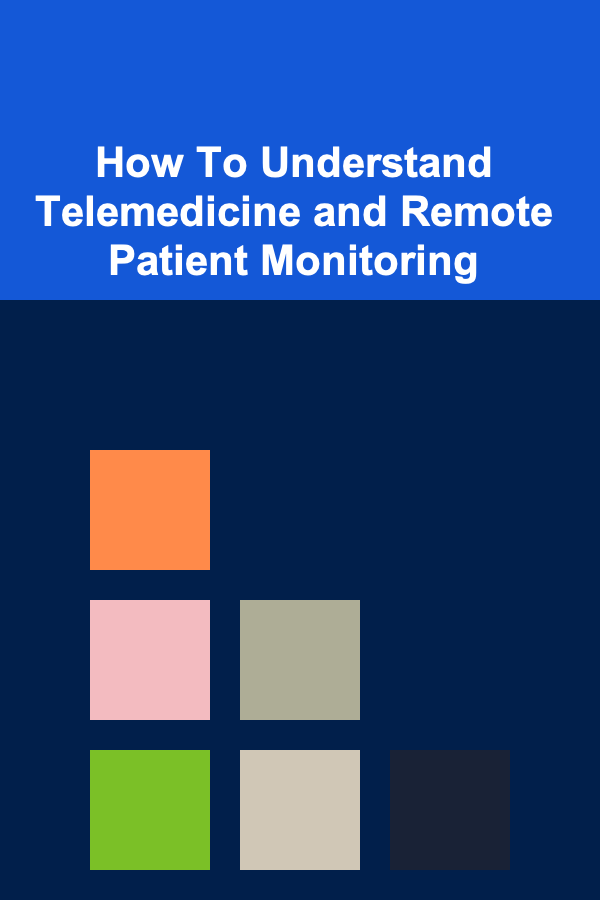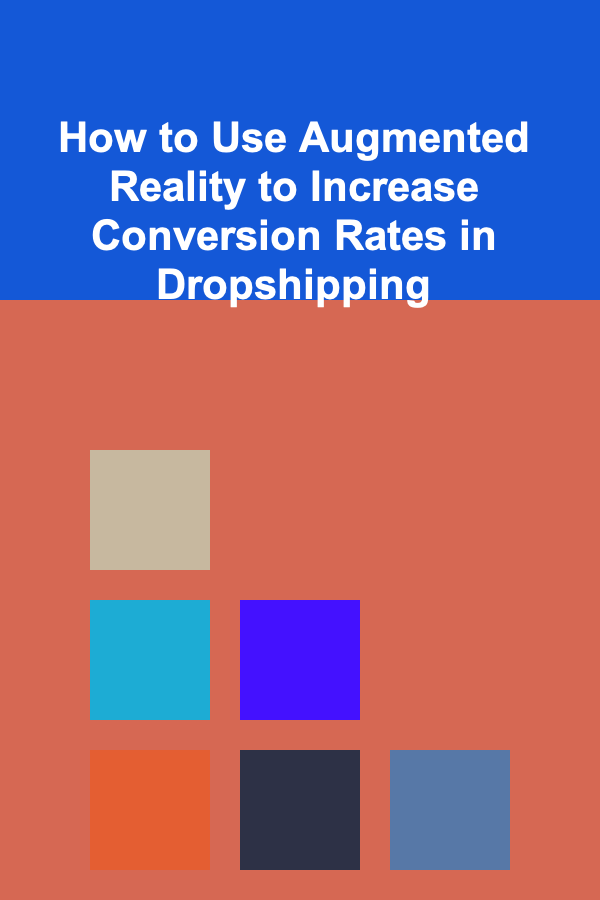
How To Understand Telemedicine and Remote Patient Monitoring
ebook include PDF & Audio bundle (Micro Guide)
$12.99$5.99
Limited Time Offer! Order within the next:

In the modern era, healthcare has evolved far beyond the traditional in-person doctor visits. The rapid advancements in technology have introduced new ways to provide medical care remotely, allowing patients to receive consultations and care from the comfort of their homes. Two of the most significant innovations in this field are telemedicine and remote patient monitoring (RPM). These technologies are not only transforming the healthcare landscape but also improving access to care, especially for those in remote or underserved areas.
This article delves into the concepts of telemedicine and remote patient monitoring, explores their benefits and challenges, and discusses how these innovations are shaping the future of healthcare.
Understanding Telemedicine
Telemedicine refers to the use of technology to deliver healthcare services remotely. Through telemedicine, patients can consult with healthcare providers via video calls, phone calls, text messaging, and other forms of digital communication. This approach allows for medical consultations, diagnosis, treatment plans, and follow-ups to take place without requiring the patient to be physically present in a healthcare facility.
Telemedicine has its roots in the need for accessibility and convenience in healthcare. Prior to its development, access to care was often limited by geographic location, transportation barriers, or the shortage of healthcare providers in certain areas. Telemedicine addressed these issues by making healthcare services available to anyone with a smartphone, tablet, or computer and an internet connection.
Types of Telemedicine
There are three main types of telemedicine services:
- Synchronous Telemedicine: This type of telemedicine involves real-time communication between patients and healthcare providers. It typically includes video calls, phone consultations, or live chat. Synchronous telemedicine is similar to a face-to-face consultation, except the interaction occurs through a digital medium.
- Asynchronous Telemedicine: Also known as "store-and-forward" telemedicine, this involves the transmission of medical data, such as medical images, test results, or patient records, to a healthcare provider for review at a later time. The provider then analyzes the data and provides feedback or recommendations. This type of telemedicine is particularly useful in situations where immediate real-time interaction is not necessary.
- Remote Patient Monitoring (RPM): This type of telemedicine involves the use of medical devices to monitor a patient's health outside of a clinical setting. Devices such as wearable heart monitors, blood pressure cuffs, or glucose meters can track vital signs and send the data to healthcare providers. RPM enables ongoing monitoring of chronic conditions and can help providers make informed decisions about treatment plans.
Key Benefits of Telemedicine
Telemedicine offers a range of benefits, both for patients and healthcare providers:
- Increased Access to Care: One of the most significant advantages of telemedicine is the ability to reach patients who may not otherwise have access to healthcare. For people living in rural or remote areas, telemedicine eliminates the need to travel long distances for medical appointments.
- Convenience and Flexibility: Telemedicine makes it easier for patients to access healthcare when it's most convenient for them. Patients can schedule appointments during non-traditional hours or from the comfort of their homes, reducing the time spent in waiting rooms or commuting to appointments.
- Cost-Effectiveness: Telemedicine can help reduce healthcare costs by minimizing the need for in-person visits, hospital admissions, and emergency room visits. It can also help decrease the overhead costs of healthcare facilities.
- Continuity of Care: For patients with chronic conditions, telemedicine allows for continuous monitoring and follow-up care. Providers can check in with patients regularly, adjust treatment plans as necessary, and provide immediate feedback without requiring patients to visit the office frequently.
Challenges of Telemedicine
While telemedicine offers numerous benefits, it also faces several challenges:
- Technology Barriers: Not all patients have access to the necessary technology or internet connectivity to participate in telemedicine consultations. In underserved areas, limited access to high-speed internet or digital devices may pose a significant barrier.
- Privacy and Security Concerns: Telemedicine involves the exchange of sensitive medical information over the internet. Protecting patient privacy and ensuring the security of data is a major concern. Healthcare providers must implement robust encryption and comply with regulations like the Health Insurance Portability and Accountability Act (HIPAA) to safeguard patient data.
- Regulatory and Licensing Issues: Telemedicine is subject to various laws and regulations that differ across countries and even states. Healthcare providers must navigate these legal requirements, including licensure and reimbursement policies, to ensure they are compliant when offering remote care.
- Quality of Care: Some critics argue that telemedicine may compromise the quality of care due to the lack of in-person examinations. While telemedicine can be effective for many conditions, it may not be suitable for situations that require physical assessments, such as surgery or complex diagnostics.
Remote Patient Monitoring (RPM)
Remote patient monitoring (RPM) is a form of telemedicine that focuses on tracking a patient's health data from a distance. RPM uses medical devices to monitor vital signs such as heart rate, blood pressure, blood sugar levels, and oxygen saturation. This data is transmitted to healthcare providers, who can then use it to make informed decisions about the patient's care.
RPM is particularly beneficial for patients with chronic conditions such as diabetes, hypertension, heart disease, and respiratory conditions. These patients require regular monitoring to manage their conditions effectively, and RPM enables continuous tracking without the need for frequent office visits.
How RPM Works
The process of RPM typically involves several steps:
- Device Setup: Patients are provided with medical devices that are designed to monitor specific health metrics. These devices may include wearable sensors, blood pressure cuffs, glucose monitors, or pulse oximeters. The devices are typically easy to use and can be operated by patients without medical training.
- Data Collection: The devices collect data in real-time and automatically transmit it to a healthcare provider. For example, a patient with diabetes might use a glucose monitor to track their blood sugar levels throughout the day, while a patient with hypertension could monitor their blood pressure regularly.
- Data Analysis: Healthcare providers receive the data remotely and analyze it to assess the patient's health status. They may use the data to detect trends or irregularities that indicate a need for intervention.
- Care Adjustments: Based on the data, healthcare providers can adjust the patient's treatment plan or provide guidance on lifestyle changes. For example, if a patient's blood pressure readings are consistently high, the provider may recommend changes to their medication or lifestyle to help manage the condition.
Benefits of RPM
Remote patient monitoring offers several advantages for both patients and healthcare providers:
- Improved Chronic Disease Management: RPM allows healthcare providers to continuously monitor patients with chronic conditions, ensuring that any changes in their health status are detected early. This enables more timely interventions and helps prevent complications.
- Reduced Hospitalizations and Emergency Visits: By providing continuous monitoring, RPM can help reduce the need for hospitalizations and emergency room visits. Healthcare providers can intervene early when a patient's health deteriorates, preventing serious health issues from escalating.
- Personalized Care: RPM allows for more personalized care by tailoring treatment plans based on real-time data. This helps providers make more informed decisions about a patient's care, ensuring that the treatment is effective and appropriate.
- Increased Patient Engagement: RPM encourages patients to take an active role in managing their health. By tracking their own health data and receiving regular feedback from healthcare providers, patients become more involved in their care and are more likely to adhere to treatment plans.
Challenges of RPM
Despite its many benefits, RPM also faces challenges:
- Device Accuracy and Reliability: The accuracy of medical devices used for RPM is critical. If the devices are not calibrated properly or if they malfunction, it could lead to incorrect data being transmitted to healthcare providers. Ensuring device reliability is essential for effective RPM.
- Data Overload: RPM generates a large volume of data, which can be overwhelming for healthcare providers. Managing and analyzing this data effectively is a significant challenge. To address this, healthcare providers may need to implement automated systems or artificial intelligence (AI) tools to help process and interpret the data.
- Patient Compliance: For RPM to be effective, patients must use the devices as instructed and provide accurate data. Some patients may struggle with using the devices correctly, while others may forget to take readings or fail to send data consistently.
- Cost: While RPM can be cost-effective in the long run, the initial setup and maintenance of monitoring devices can be expensive. This could present a barrier for some patients, particularly those without insurance coverage for telemedicine services.
The Future of Telemedicine and RPM
The future of telemedicine and remote patient monitoring looks promising. As technology continues to evolve, both telemedicine and RPM will likely become more widespread and integrated into the healthcare system.
- Artificial Intelligence and Machine Learning: AI and machine learning will play an increasingly important role in telemedicine and RPM. AI can help analyze large datasets, detect patterns, and provide healthcare providers with actionable insights. Machine learning algorithms can also be used to predict health outcomes and recommend personalized treatment plans.
- Integration with Electronic Health Records (EHRs): Telemedicine and RPM will become more integrated with EHR systems, allowing healthcare providers to access patient data from a single platform. This will improve the efficiency of care coordination and ensure that providers have a complete picture of a patient's health.
- Expanding Access: As internet connectivity improves globally, more patients will have access to telemedicine and RPM services. This will be especially beneficial for underserved populations in rural or low-income areas who may have limited access to traditional healthcare.
- Regulatory and Policy Changes: Governments and healthcare organizations will continue to adapt regulations and policies to accommodate the growth of telemedicine and RPM. This may include expanding reimbursement for telemedicine services, streamlining licensing requirements, and ensuring data security standards are met.
Conclusion
Telemedicine and remote patient monitoring are revolutionizing the healthcare industry by improving access to care, enhancing chronic disease management, and reducing healthcare costs. While challenges remain, the potential for these technologies to transform healthcare is immense. As technology continues to advance, the integration of telemedicine and RPM into mainstream healthcare will likely increase, making healthcare more accessible, efficient, and personalized for patients around the world.

How to Set Up a Pet-Friendly Kitchen
Read More
How to Store Embroidery Supplies Neatly
Read More
How to Use Augmented Reality to Increase Conversion Rates in Dropshipping
Read More
How To Apply Stoicism to Overcoming Addiction
Read More
Interpreting Mythological Gardens and Groves: A Journey Through Symbolism and Meaning
Read More
How to Pack for a Digital Nomad Lifestyle
Read MoreOther Products

How to Set Up a Pet-Friendly Kitchen
Read More
How to Store Embroidery Supplies Neatly
Read More
How to Use Augmented Reality to Increase Conversion Rates in Dropshipping
Read More
How To Apply Stoicism to Overcoming Addiction
Read More
Interpreting Mythological Gardens and Groves: A Journey Through Symbolism and Meaning
Read More